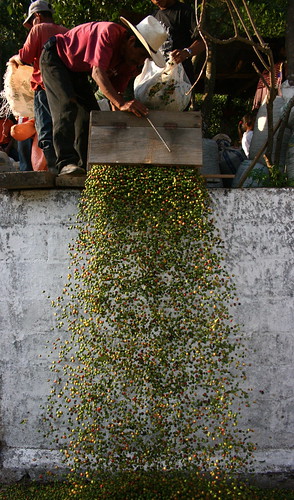Dairy.
I know, I know, how elite can you get? No milk in your coffee. Don't take my mocking seriously. It has it's place, really, it does. I'm not lactose intolerant but I also am not an addicted coffee drinker. When I am not working in coffee, I am not an everyday drinker. If I was, I might be a whole lot more tolerant of what was in the cup.
I live in Inman Sq. and let me tell you, going to the neighborhood shop and getting french roast off the heated pots, having sat who knows how long, extra cream and sugar won't hurt. Nobody should cast aspersions on the cream and sugar kind because it's always relative. It has a place in the hearts of habitual drinkers used to strong (dark and bitter) coffee or bland sour coffee(think D&D iced).
On the other side of the argument, a cup of Panama Esmeralda or a berried Kenya light roast might not be so hot in that milk. At steep per cup price tags, why would you be drinking it unless you wanted to experience the coffee straight? It's a case of a good match and getting elitist about it would imply we have come farther than we really are in the industry. Being insulted as a barista that someone added cream or sugar to your drink is really a bit immature and snotty.
I once had a goal to reduce the sugar usage and reduce drinks sizes. I achieved it not by lectures and attitude but by calculated changes in the product itself and specifically marketing towards the segment of drinkers already in the know. Now I realize, just approach the coffee as the best expression you can create and don't worry about being a soup nazi to how it is imbibed. In truth, your coffee may not be as good as you think, in which case a little cream or sugar might help.



